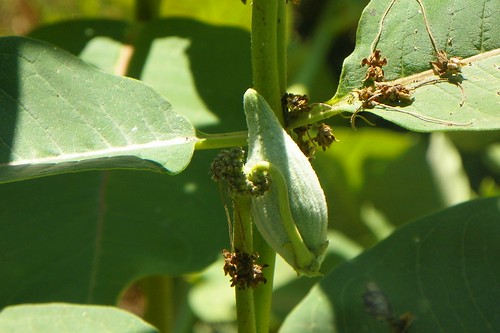
Milkweed has been getting a lot of press over the last few years regarding its vital role in Monarch butterfly reproduction. The destruction of milkweed plants, regarded as weeds, has a negative impact on Monarch populations. Over the years, I have tried growing a few cultivated varieties of milkweed (Asclepias spp) in my garden, but none have done as well as the native variety, Asclepias syriaca. It introduced itself to the garden and has settled in a few small stands which I leave to do their thing. The plants have just finished flowering and are now beginning to produce their pods of bewhiskered seeds, adored by children of all ages.

Yesterday I checked the leaves of some of the plants for Monarch caterpillars and was pleased to discover a couple of little munchers. You can watch for leaves with holes or ragged edges and gently turn them over. Monarchs tend to lay their eggs singly and each caterpillar had a leaf to itself.

But the Monarch babies didn’t have the milkweed all to themselves. I also found a cluster of tiny Milkweed Tussock Moth caterpillars voraciously skeletonizing the top leaves of their plant with gusto! it’s a wild world out there.





